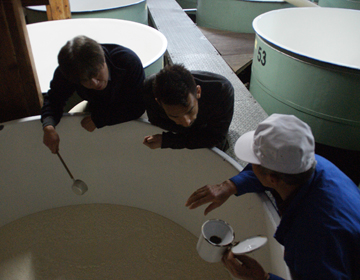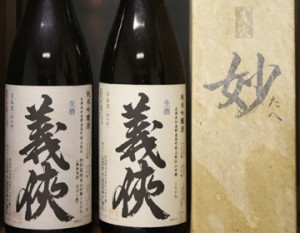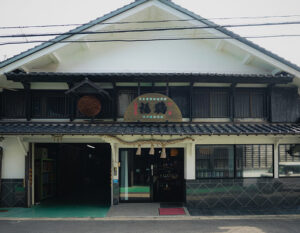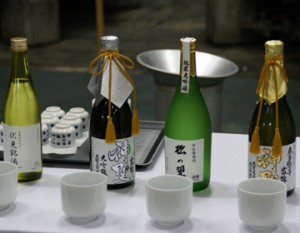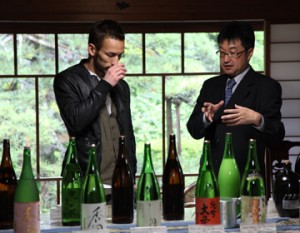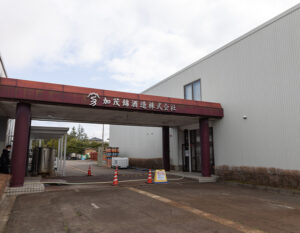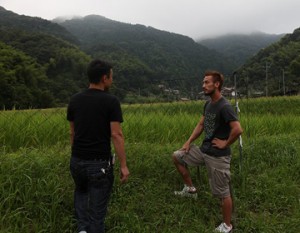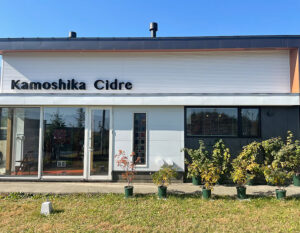Food and ”sake” – enhancing both of their flavors

The local people of Kanagawa are fond of the abundant nature, such as the mountains in the west, Tanzawa-san and Oyama. At the base of these mountains, there is a brewery called ”Kawanishiya Shuzoten” in Yamakita-cho, Ashigarakami-gun. They produce a signature label named ”Tanzawa-san” which is popular not only in Kanagawa but nationwide.
As soon as the interview started, the president Masakazu Tsuyuki described the ”sake” he aspires to brew. ”In the Japanese food culture, we cook with ’dashi,’ soup stock made from fish and kelp. We aim to brew ’sake’ that matches ’dashi,’ not just ’sake’ that tastes good, but when you match it with food, the flavor of both food and ’sake’ is enhanced.” In order to bring out the flavor of rice and to brew ”sake” that matches the food, the experience to determine the characteristics of rice and delicate work process are required. Kamikawa Osamu, the ”toji” is in charge of brewing ”sake.”
We observed the freshly steamed rice as we continued with the interview. Before steaming the rice, it is soaked in water. This very important process is called ”shinshi” or ”shinseki.” ”The soaking time differs by 10 second increments. The state of steamed rice affects the ’sake’s’ flavor”.
Manually making ”koji”
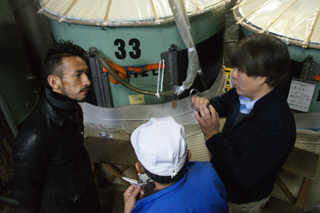
Inside, the ”koji-muro” was lined with ”koji-buta” wooden vats for ”koji” making. ”It is important to manage the humidity and temperature in order to cultivate ”koji” mold. With mechanization, temperature is controlled by sending in air. But our method is to spread ”koji”, covering and uncovering ”koji” with cloth by hand,” explained Kamikawa. The person in charge of ”koji” making checks on the ”koji” twice a night and adjusts the room temperature accordingly.
”For example,” he said as he showed us the ”koji”. The ”koji” filled about half of the ”koji-buta.” This state is called ”mori.” The mold is cultivated when the temperature rises, the mold is gradually spread in order to maintain a uniform and stable temperature.
”Have a taste. Do you taste the sweetness growing stronger?” asked Tsuyuki. ”I want to take extra time fermenting the ’sake’ to bring out the taste, then I want to let it age to withstand being heated. The flavor should be robust enough to be warmed for ’okan.’” The greatest appeal of ”sake” is that the ”koji” is alive. Their questioning mind to know more about ”koji” demonstrates to us that ”sake” is their life.
”Sake” that is more flavorful as ”okan”
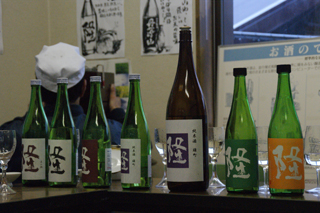
Tsuyuki wants more people to enjoy warmed ”sake” or ”okan”. While we were tasting their sake, a person especially in charge of warming the ”sake” appeared. Nakata is surprised and asked, ”Is he a professional ’okan’ person?” The flavor of ”Tanzawa-san” spreads out even more when served warm. If you have not had much ”okan,” it may be interesting to find your favorite temperature.
Kawanishiya Shuzoten also has another label called ”Ryu”. ”Ryu” aged one year and two years each taste entirely different, but both are beautifully balanced. It is a product of the heart and soul, sold only through a handful of distributors. We will keep our eyes on Kawanishiya Shuzoten, as they will continue to develop ways to make the best ”sake” by hand.



